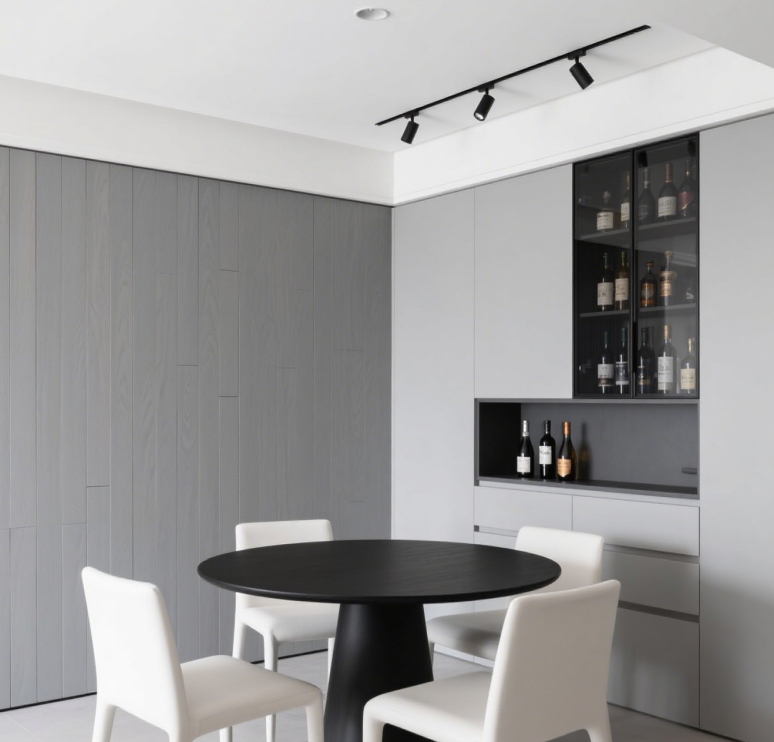In 2025, homeowners, architects, and interior designers are shifting away from traditional materials. With growing demand for sustainability, waterproofing, durability, and easy maintenance, WPC (Wood-Plastic Composite) wall cladding has become a front-runner in modern interior applications.
WPC wall cladding blends the natural beauty of wood with the functional strength of composites. From high-traffic hallways and moisture-prone bathrooms to minimalist kitchens and cozy bedrooms, it offers an elegant, durable, and practical solution for indoor spaces.

Let’s explore why WPC wall cladding is quickly becoming the go-to material for interior design professionals and homeowners alike.
WPC wall cladding is engineered for resilience. It resists rot, insects, mold, and impact damage, making it a long-lasting solution for busy environments. It doesn't crack, warp, or shrink with humidity changes—ideal for both homes and commercial interiors.
In high-end hotel lobbies, WPC flooring and cladding are now used to withstand foot traffic and luggage drag while maintaining a sleek appearance over time.
👉 Read more: Durable Wall Covering Materials
Thanks to its composite nature, WPC wall cladding is highly waterproof, making it perfect for:
Bathrooms, where steam and water are constant
Kitchens, where spills and splashes are frequent
Basements, where humidity can be a long-term issue
Unlike wood, it doesn’t swell, rot, or mold. Some homeowners now prefer WPC wall cladding in bathrooms instead of traditional tiles due to its quick installation and warmer appearance.
👉 Learn more: WPC vs. PVC Wall Panels
WPC wall cladding is typically made from recycled wood fibers and plastic, reducing dependence on virgin timber and lowering environmental impact. The production process uses less energy than traditional materials and emits zero VOCs, ensuring safe indoor air quality.
In many green building projects, WPC wall cladding is a staple choice due to its environmental credentials and long-term sustainability.
Advanced manufacturing allows WPC wall cladding to mimic a wide range of materials—from natural hardwood to stone or tile textures—without their limitations. It supports styles such as:
Rustic farmhouse living rooms
Sleek modern bedrooms
Industrial-inspired studios
For instance, a light gray wood-grain WPC feature wall behind a TV setup can elevate a modern living room, blending seamlessly with black and white furniture for a sophisticated look.
As the central social hub, the living room requires beauty and resilience. WPC wall cladding can be installed on feature walls behind sofas or TVs to instantly boost texture and dimension. WPC flooring complements the setting with a natural look and easy maintenance—ideal for families with pets or children.
WPC wall cladding adds warmth and texture to bedrooms. When used on the headboard wall, it creates a soft and cozy backdrop. Combined with ambient lighting and neutral tones, it transforms the space into a serene retreat. WPC flooring also helps dampen footstep noise, promoting restful sleep.
Kitchens demand waterproof, heat-resistant, and easy-to-clean materials. WPC wall cladding fulfills these needs while offering aesthetic flexibility. Used for cabinet fronts or backsplash areas, it resists stains and steam. A damp cloth is usually enough to keep it clean. Unlike tile, it’s faster to install and feels warmer underfoot.
In open-plan kitchens, WPC wall cladding creates a cohesive look between cabinets and walls, adding both practicality and elegance.
Bathrooms are the most humid spaces in a home, making waterproof wall cladding essential. WPC wall cladding withstands steam and water exposure with ease, without warping or mold growth. Its anti-slip flooring properties enhance safety, even when wet.
In many luxury renovations, WPC is used to create fully integrated bathroom designs—walls, storage, and floors that are stylish, seamless, and safe.
👉 Explore more: 2025 Exterior Wall Material Trends
| Feature | WPC Wall Cladding | Traditional Wood | Tiles | Plastic Panels |
|---|---|---|---|---|
| Waterproof | ✅ Excellent | ❌ Poor | ✅ Excellent | ✅ Good |
| Maintenance | ✅ Minimal | ❌ High | ✅ Low | ✅ Low |
| Aesthetic Options | ✅ Realistic & varied | ✅ Natural | ❌ Cold/hard | ❌ Lacks texture |
| Eco-Friendliness | ✅ Recycled content | ❌ Requires deforestation | ❌ Energy-intensive | ❌ Petroleum-based |
| Installation Ease | ✅ Fast, DIY or pro | ❌ Labor-intensive | ❌ Needs professional install | ✅ Easy |
| Durability | ✅ High | ❌ Susceptible to damage | ✅ High | ⚠️ Varies |
Bottom line: WPC wall cladding delivers the best mix of performance, appearance, and practicality for modern interiors.
As environmental consciousness rises and material technology advances, WPC wall cladding is set for rapid growth. Here’s what’s next:
Improved fire resistance, soundproofing, and insulation
More realistic finishes and material effects
Decreasing costs due to higher production scale
Designers and consumers will continue to embrace WPC wall cladding for its unique combination of visual appeal, performance, and affordability.
With its durability, moisture resistance, rich design variety, and environmental value, WPC wall cladding is revolutionizing modern interior spaces. It’s ideal for residential renovations, commercial fit-outs, and sustainable building projects alike.
Whether you’re aiming for a warm and inviting home or a sleek, professional space, WPC wall cladding delivers both beauty and performance.
Now is the time to adopt this next-generation material and stay ahead in design innovation.
praysunmaterials@gmail.com